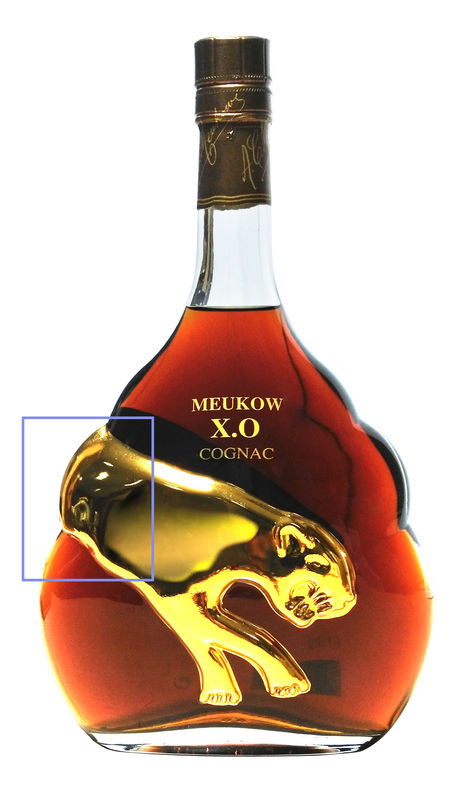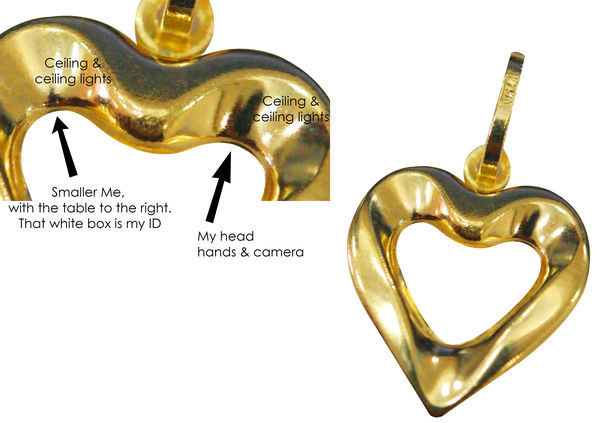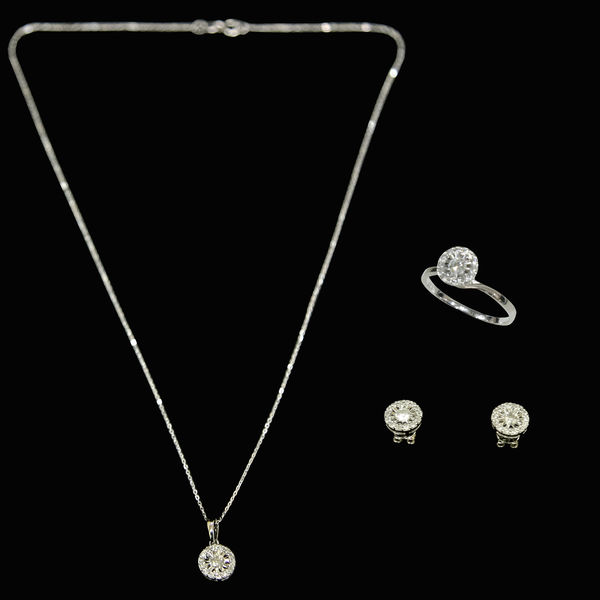To FLASH or not to FLASH!
Oct 27, 2020 22:19:46 #
I'm a senior, and I'm very new to all this. I got a Canon DSLR SL1 to take jewelry photo's. I got a very nice 'light tent'...with built in lights. My Camera did not come with a flash attachment. I've been reading up on Aperatures. Less Aperatures...more light. Should I get a flash attachment, or can I make it work with using Aperatures?
Thanks in advance
Thanks in advance
Oct 27, 2020 22:51:30 #
IMO, you do not want flash for jewelry. Sounds like you have what you need - the "film" is free. Just experiment in the mid f stop range using aperture, you'll likely get what you need! Best of luck, have fun.
Oct 27, 2020 22:54:12 #
Agree with quix. Use your light tent. Flash will produce unpredictable reflections. And shoot from a tripod.
Oct 27, 2020 22:58:30 #
The light tent is a good idea. I’m a little skiddish around flash. For effect, work with a star filter or ND filter
Oct 27, 2020 23:11:37 #
Two things going on here, @Kaowdo - the lighting and the aperture (that's how it's spelled by the way).
As for lighting, as others have pointed out, using flash can be tricky, particularly with jewelry where you will find it had to see in advance where unwanted reflections or flare might pop up. So continuous lights (basically, light bulbs that just stay on) are likely your better bet, at least at first.
Aperture, or f stop, refers to the size of the diaphragm opening you set in the lens. All else being equal, a smaller aperture (higher f number) affords more "depth of field" - that is, the thickness of the band of focused space in front of the lens. Of course, as you realize, smaller aperture opening will mean more light required (or a slower shutter speed to ensure enough light reaches the chip.
Since jewelry is static, the use of a fast shutter speed is not important - have the cameraon a tripod to hold it steady and use whatever shutter speed is required for proper exposure once you set the aperture you want.
I hope that helps.
As for lighting, as others have pointed out, using flash can be tricky, particularly with jewelry where you will find it had to see in advance where unwanted reflections or flare might pop up. So continuous lights (basically, light bulbs that just stay on) are likely your better bet, at least at first.
Aperture, or f stop, refers to the size of the diaphragm opening you set in the lens. All else being equal, a smaller aperture (higher f number) affords more "depth of field" - that is, the thickness of the band of focused space in front of the lens. Of course, as you realize, smaller aperture opening will mean more light required (or a slower shutter speed to ensure enough light reaches the chip.
Since jewelry is static, the use of a fast shutter speed is not important - have the cameraon a tripod to hold it steady and use whatever shutter speed is required for proper exposure once you set the aperture you want.
I hope that helps.
Oct 27, 2020 23:25:57 #
f8lee wrote:
Since jewelry is static, the use of a fast shutter speed is not important - have the camera on a tripod to hold it steady and use whatever shutter speed is required for proper exposure once you set the aperture you want.

Oct 28, 2020 00:12:19 #
Scruples wrote:
The light tent is a good idea. I’m a little skiddish around flash. For effect, work with a star filter or ND filter
What good would a ND filter be for shooting jewelry?
Oct 28, 2020 00:21:37 #
Kaowdo wrote:
I'm a senior, and I'm very new to all this. I got a Canon DSLR SL1 to take jewelry photo's. I got a very nice 'light tent'...with built in lights. My Camera did not come with a flash attachment. I've been reading up on Aperatures. Less Aperatures...more light. Should I get a flash attachment, or can I make it work with using Aperatures?
Thanks in advance
Thanks in advance
Hi,
In my line of work, I often take pictures of reflective objects like jewelry, bottles etc.
Mirrored objects are the hardest thing to take pictures of.
In the bottle image below, you can actually see the room where it was taken. It looks like a hallway with the ceiling and ceiling lights clearly visible.
In the pendant sample, it is passable if printed small like flyers or handouts, but on looking at the photo closely, I can see myself, the camera, ceiling & ceiling lights. So it is also not good for large posters.
The last image is what can happen when a big aperture is used. Yes it will take in more light, but will also make a shallow depth of field and some lenses are not sharp fully open so not only do the sharpest part will be out of focus already, the other parts will be more so. Here the other end of the necklace is much out of focus. On the ring, the diamond is out of focus but the back end of the loop is sharp.
To wrap it up, Mirrored objects are best photographed in a dark lit room where the lighting is focused to the object but located far from it. For small items like jewelry, a lightbox is a good option if the above snoot lighting is impractical.
In both cases;
1. Wear dark clothes and shoot on a dark room.
2. Use a good tripod. If all you have is a wobbly one, don't extend the legs.
3. Use a smaller aperture to increase DOF
4. Use the lowest ISO of the camera.
5. Delay the shutter so the camera is steady before it takes a picture
6. Use the shutter speed setting to brighten or darken your image.
7. If required, use focus stacking.
8. DO NOT USE FLASH if you can not control light bleeding out to all directions. It will complicate your problem.
9. Keep chimping so you can see if you have taken a good image and adjust as needed.
10. JPEG is usually sufficient for a controlled lighting scene, but on mirrored objects with a very high contrast, RAW would be a better choice. If you know how to process RAW, use it. Either way, some form of editing afterwards will produce a better final image.
Oct 28, 2020 00:23:38 #
Kaowdo wrote:
I'm a senior, and I'm very new to all this. I got a Canon DSLR SL1 to take jewelry photo's. I got a very nice 'light tent'...with built in lights. My Camera did not come with a flash attachment. I've been reading up on Aperatures. Less Aperatures...more light. Should I get a flash attachment, or can I make it work with using Aperatures?
Thanks in advance
Thanks in advance
Since you say you are 'very new to all this' - 'less aperture... more light' - means the lower the f number ... more light. (e.g F4.0 is many is wider and many more times more light than F22.)
If you are not getting enough light with your tent lights, try increasing your exposure time ( eg 1/100 is more than 1/200 sec) but not too much unless you are using a tripod. Alternatively you can increase the ISO - but not too much.
Oct 28, 2020 00:53:41 #
Oct 28, 2020 01:20:55 #
Kaowdo wrote:
Thank you. I appreciate your input. I have soooooooooooooo much to learn.
Just to clarify, dark lit does not mean no light. The idea is to have a grey evenly lighted walls with controlled lighting to adjust as needed and minimize errant blooms & highlights.
Oct 28, 2020 06:06:00 #
Oct 28, 2020 06:08:33 #
Oct 28, 2020 06:35:16 #
Scruples wrote:
That’s my typo. I meant uv
What good would a UV filter be for shooting jewelry?
Oct 28, 2020 07:07:00 #
billnikon
Loc: Pennsylvania/Ohio/Florida/Maui/Oregon/Vermont
Kaowdo wrote:
I'm a senior, and I'm very new to all this. I got a Canon DSLR SL1 to take jewelry photo's. I got a very nice 'light tent'...with built in lights. My Camera did not come with a flash attachment. I've been reading up on Aperatures. Less Aperatures...more light. Should I get a flash attachment, or can I make it work with using Aperatures?
Thanks in advance
Thanks in advance
Make sure the light is diffused and even, also make sure you shoot at an aperature that will give you overall sharpness of the item. ie. f8 or f11 should do it, make sure, if your not on a tripod, to shoot at least at 1/125 sec. Just up your speed (iso) until you get to the f stop and shutter speed necessary.
Also, make sure you adjust your white balance to assure the image has accurate color.
If you want to reply, then register here. Registration is free and your account is created instantly, so you can post right away.











